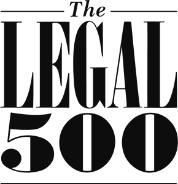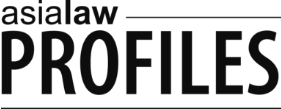Settlors may set up trusts to protect assets from creditors. These trusts are often called asset protection trusts. In La Dolce Vita v. Zhang Lan, a creditor sought to characterize an asset protection trust as a sham for the purpose of recourse to the assets which the settlor had placed into the trust. The case is instructive as to steps which may come under scrutiny when creditors seek to attack the transfer of assets into an asset protection trust. In this article, we look at some of the lessons the case offers to avoid a finding of a sham trust.
Our companion trust validity article provides information on the effect of family laws on asset protection trusts.
If you would like more information about asset protection trusts or would like to find out more about trusts generally please contact one of our Trusts lawyers.
In La Dolce Vita v. Zhang Lan, the plaintiff bought a majority controlling interest in a business from the defendant. A dispute arose in connection with the sale. The dispute led to arbitral proceedings and, in support of those proceedings, in February, 2015, the plaintiff obtained an injunction against the defendant in respect of the disposal of her assets and an order for the defendant to disclose her assets. The plaintiff subsequently sought leave to commence committal proceedings against the defendant for contempt of court, alleging that the defendant had breached the injunction and disclosure order.
Settlement of Family Trust
Just over a year prior to the injunction and disclosure order, in January, 2014, the defendant had established a company (“SETL”). At the time she was the sole legal and beneficial owner.
Then, in June, 2014, prior to the dispute arising between the plaintiff and the defendant, the defendant established a family trust. The defendant asserted that she had no rights under the trust and, in particular, had no right to any assets or revenues of the trust, no right to dismiss or appoint the trustee and no right to include or exclude beneficiaries. As part of the settlement, she transferred the sole share she held in SETL to the trust. An instrument of transfer evidenced the transfer. The trustee of the family trust was a professional trustee.
Director and Bank Signatory
However, despite her assertion that she had no interest in the trust, following the transfer of her shareholding in SETL to the trust, she remained a director of SETL until March, 2015, shortly after the injunction and disclosure order were made.
Furthermore, following the establishment of the trust and the transfer of the sole share in SETL to the trust, the defendant continued to be the sole authorized signatory of SETL’s bank accounts and no steps were taken to inform the banks of a change in beneficial ownership.
Transfer of Monies
In March, 2015, monies were transferred from SETL’s bank account to companies controlled by the defendant and to pay for life insurance premiums on policies for the benefit of the defendant and her son.
Conversely, in July, 2014, shortly after the family trust was established, the defendant transferred monies from her personal bank account to SETL’s bank account. The fund transfer documentation explained the third party transfer on the basis that “SETL was owned” by the defendant. The defendant explained the documentation on the basis that the bank was unaware of the change in ownership of SETL which had taken place the month before and had not confirmed her relationship with SETL when processing the fund transfer.
Trust Discussions
In January and February, 2015, before the injunction and disclosure order, there were emails exchanged between SETL and the defendant’s bankers and the trustee in respect of a transition to a trust arrangement.
Findings
The court evaluated the above facts on the basis that, as the court was concerned with possible committal for contempt, allegations as to the defendant’s beneficial ownership in the trust assets had to be established by the plaintiff beyond a reasonable doubt. In this regard, the court held that these allegations had not been proven to this standard – though, for completeness, the court did find a breach of the disclosure order for reasons unrelated to the trust.
Asset Protection Lessons
Regardless of the court’s findings, the case highlights some of the pitfalls which can affect the extent to which a family trust can protect assets. Key lessons to be learned include the following.
Documentation Consistency
It is important to ensure consistency in documentation including third party documentation. In this case, though the documentation showed that the shareholding in SETL had been transferred to the trust (in effect, as the holding company for the trust assets), bank documentation continued to show the defendant as the owner of SETL. This inconsistency gave rise to concerns as to the legitimacy of the trust. These concerns could have been avoided had the defendant notified the banks in writing of the change in ownership of SETL in favour of the trust.
Professional Trustee
A key factor upon which the court relied in finding a valid family trust and in rejecting the allegation the trust was a sham was that the trustee was a professional trustee.
Directorships and Bank Signatories
The continuation of the defendant as the director of SETL and the sole authorized bank signatory for SETL’s accounts gave rise to concerns as to whether she continued to be the real beneficial owner of SETL. It is not uncommon for a settlor to take on these roles for a company held by the trust but it may have been preferrable for specific written documentation to have been put in place to record both the trustee’s reasons for the defendant to have continued in these roles and the arrangements whereby the trustee could demonstrate control over SETL and its bank account. Such documentation could have limited the force of allegations that the trust was a sham.












